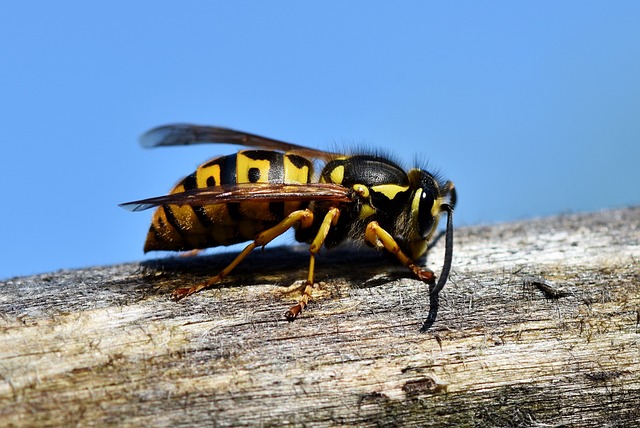Hornets form complex colonies led by a queen, with workers tending to the colony and defending their nests aggressively. Regular inspections and proactive seasonal maintenance strategies, including proper cleanliness and waste management, are crucial for preventing nest formation. Professional hornet extermination services use specialized tools and tailored methods to safely remove hornets, with early detection and prevention key to maintaining a hornet-free environment. Long-term prevention involves regular inspections, sealing entry points, and routine maintenance for sustained peace of mind.
Hornets, though often misunderstood, can pose significant risks to homes and communities. To ensure a safe, hornet-free environment, regular maintenance is key. This article explores comprehensive strategies for hornet extermination services, from understanding their behaviors and seasonal adjustments to implementing effective tools and techniques. Learn about post-extermination care and long-term prevention measures to keep your space secure year-round.
Understanding Hornet Behaviors and Their Impact
Hornets, a type of social wasp, are known for their aggressive defense mechanisms and powerful stings. Understanding their behaviors is crucial when developing effective hornet extermination services. These insects form complex colonies with a queen at their head, responsible for egg-laying. Workers, which outnumber the queen, tend to the colony, protect it, and forage for food. Hornets are particularly active during the day, building nests in trees, bushes, or even buildings. Their presence can significantly impact an environment, causing distress to residents and visitors due to their territorial nature and tendency to defend their nests vigorously.
Regular inspections by professional hornet extermination services are essential to identifying and mitigating potential hazards. These experts can provide valuable insights into hornet behaviors, allowing for tailored strategies to eliminate nests safely. By understanding the impact of hornets on human activities and ecosystems, we can better appreciate the need for proactive measures to ensure a hornet-free environment through specialized pest control services.
Implementing Seasonal Maintenance Strategies
Implementing seasonal maintenance strategies is a proactive approach that hornet extermination services often recommend for property owners to maintain a hornet-free environment. During spring and summer, when hornets are most active, regular inspections and prompt actions can prevent nests from forming in attics, walls, or other hidden spaces. This includes checking for any signs of entry points, sealing them off, and removing potential food sources that might attract these insects.
For autumn and winter, maintaining cleanliness and proper waste management is crucial. Hornet extermination services suggest eliminating standing water near the property and ensuring proper disposal of organic materials to reduce the risk of hornets establishing new nests during cooler months. Seasonal maintenance plans should also include routine checks for any surviving hornet activity, as they can be resilient and attempt to regroup after attempts at extermination.
Essential Tools and Techniques for Extermination
When it comes to ensuring a hornet-free environment, professional hornet extermination services are indispensable. These services employ specialized tools and techniques tailored for effective and safe removal. Among the essential tools are powerful insecticides that target hornets specifically, allowing for precise application while minimizing environmental impact. Traps, both chemical and non-chemical, are also crucial; they lure and capture hornets without harming beneficial insects or pets.
Techniques vary based on the size and location of nests but often involve strategic placement of traps around properties, especially during peak activity periods. Professional exterminators may also use smoke or carbon dioxide to disorient and remove hornets from their nests. Regular inspections are a critical component, enabling early detection of new nests or stray hornets, thus preventing colonies from establishing and ensuring a hornet-free zone.
Post-Extermination Care: Long-Term Prevention Measures
After successful hornet extermination services, it’s crucial to implement long-term prevention strategies to maintain a hornet-free environment. One key measure is regular inspections, where professionals meticulously scan your property for any signs of hornet activity or potential nesting sites. This proactive approach helps identify and address issues early, preventing future infestations.
Additionally, sealing entry points and securing areas around the property can significantly deter hornets from returning. This includes checking for gaps in walls, windows, doors, and other openings, ensuring they are properly sealed. By combining these prevention tactics with regular maintenance, you contribute to a sustained environment free from hornets, providing peace of mind for both residents and visitors alike.
Maintaining a hornet-free environment requires a comprehensive approach that combines understanding their behaviors, implementing seasonal strategies, and adopting effective tools. Post-extermination care, including long-term prevention measures, is vital to ensure these pests don’t return. For professional and efficient hornet extermination services, it’s essential to consult specialists who can provide tailored solutions, ensuring your space remains safe and pest-free.
